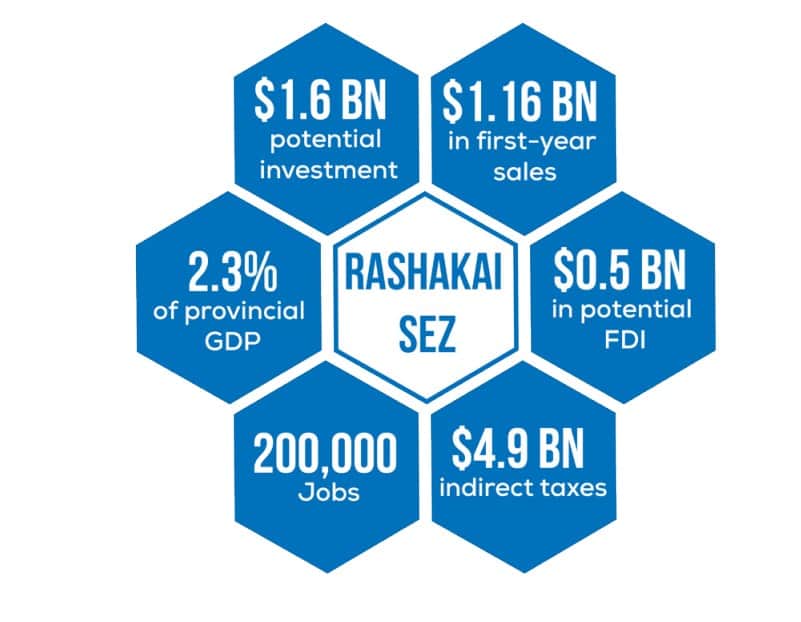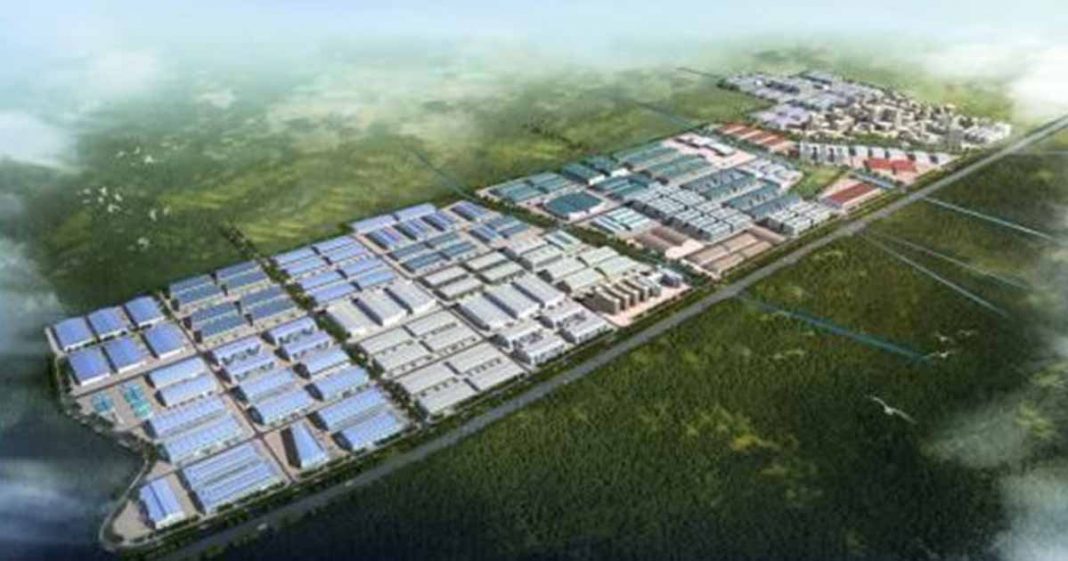With the advent of M-1, Rashakai – a small sleepy town in Khyber Pakhtunkhwa (KPK) province renowned in the region for its cloth market – suddenly became a feverish interchange for people travelling to Nowshera, Mardan, Swat and other Northern parts of KPK.
On Sept 14, 2020 with PM Imran Khan launching its CPEC linked Special Economic Zone the old little town reinvented itself once again. Now the world will remember Rashakai for its SEZ that is giving a new meaning to the old Silk Road. Did someone say, “new wine in the old wineskins” (Mathew, 9:14-17). With a predicted investment of US $ 1.6 billion, RSEZ is set to generate 200,000 jobs.
Read more: SEZs: The Economic Gold Mines
Annual product sales are expected to around $1.2 billion with a cumulated effect of almost $29 billion over 25 years. RSEZ will become an economic hub for the surrounding cities bringing growth and industrialization for KPK and Pakistan. Strategic Location The location of the Rashakai Special Economic Zone (RSEZ) is central to trade and development; as mentioned above it will be a hub on the historic Silk Route.
It is strategically located on M1 Motorway at the intersection and links to CPEC routes through the Burhan interchange and the Swat Expressway. Connected to mega-centres in all directions: it is approximately 55 Km from Peshawar, 97 Km from Islamabad and 116 Km from Torkham. RSEZ will comprise of three crossroads, four gateways, six economic hubs and six passages to facilitate travel and trade.

The total population in the immediate surroundings is estimated to be over 35 million, including the newly merged districts, but given its access to Afghanistan, to China via northern CPEC route and Punjab to the south; the RSEZ gets access to almost 112 million people – and thus becomes an attractive destination for investments.
SEZ Management RSEZ will be managed through a special purpose vehicle named Rashakai Special Economic Zone Development and Operations Company (RSEZDOC) which is jointly owned by the China Road and Bridge Corporation (CRBC – owns 91%) and by KPEZDMC (owns 9%), in a public-private partnership. The CRBC is a Chinese State-Owned Enterprise that was designated by the Government of China for Development of Rashakai Prioritized SEZ.
Read more: Allama Iqbal Industrial City: Pakistan’s First CPEC Special Economic Zone
The company is responsible for undertaking all the financial developments of the project. The KPEZDMC is a company that is fully owned by the Khyber Pakhtunkhwa government set up to ensure speedy industrialization in the province. The objectives of the partnership are to develop, market, operate a successful and sustainable special economic zone that increases economic growth and employment generation in the region.
Status of SEZ
PM Imran Khan was part of the signing ceremony on Sept 14 this year. Before that all negotiations that had been ongoing for the last few years between its Chinese and Pakistani stakeholders were concluded, and the Concession Agreement (CA) and Development Agreement (DA) were meticulously reviewed and approved by all relevant authorities and RSEZ got registered with the SECP on July 17, 2020. PC-1 for provision of Electricity (210 MWs – Rs.1.8 bn approved in Nov. 2019) and Gas (30 mmcfd – Rs.1.2bn approved in Dec. 2019) have been approved.
The main clusters in the industrial area include agri-base and food processing, electronics and electrical appliances, automobile and mechanical equipment, general merchandise and sports goods, garments and textiles products
First tranches have been released and work is now in progress. PC-1 for Access Road (Phase-1; Wali Interchange to Zero Point) approved, and construction work commenced – 45% already completed. This will thus be the second CPEC linked SEZ that has taken off this year, first one, Allama Iqbal Industrial City, near Faisalabad, managed in public private partnership by FIEDMC was inaugurated by PM Imran Khan in January.
RSEZ: Size and Scope
The special economic zone is situated on 1000 Acres of land with an estimated development cost of $128 million. The total leasable area is 778 acres, including 702 acres for industrial activity and 76 acres for commercial activity. The development will be spaced out in three phases and will take approximately six to seven years till completion.
Read more: How Digital Silk Road – the Chinese BRI in cyberspace will transform lives
Phase 1, with an assigned area of 247 acres, is estimated to be completed within two years. Phase 2, with an assigned area of 335 acres, is estimated to be completed within the next two years. Phase 3, with an assigned area of 399 acres, is estimated to be completed within the next 2-3 years after Phase 2 is completed.
RSEZ: Main Industries
Strategic industrial clustering is one of the tactics employed to give the RSEZ a trading and commercial edge in the region. The main clusters in the industrial area include agri-base and food processing, electronics and electrical appliances, automobile and mechanical equipment, general merchandise and sports goods, garments and textiles products, and marble, minerals and chemicals.


